Animation is often dismissed as a medium for children, neatly boxed into family entertainment. In Japan, though, anime and manga have long been cultural powerhouses—and, by the 21st century, global ones too. The Japanese graphic or comic novels, known as manga, aren’t limited to superhero sagas or risqué pulp; their range spans dystopian sci-fi to slice-of-life dramas. With the rise of powerhouse animation studios in the 1980s, many of these stories found new life as anime. The home video boom that followed carried anime into Western living rooms, securing its international foothold.
Animation is often expected to dwell in the fantastical. But Japanese animation has long confronted the nation’s social realities, producing naturalistic dramas aimed squarely at adults. These works tackled themes as complex and mature as anything in live-action cinema—sometimes more so. My here list attempts to bring together anime that stir genuine human emotion, rendered through hand-drawn or computer-generated characters.
Some of these anime films lean into fantasy, others remain firmly rooted in reality, but all carry a streak of melancholy. They offer a way to sit with grief, longing, and tenderness. Here are 20 of the saddest anime movies, each capable of stirring emotions you might not even realize you’ve been holding onto:
20. The Dog of Flanders (1997)
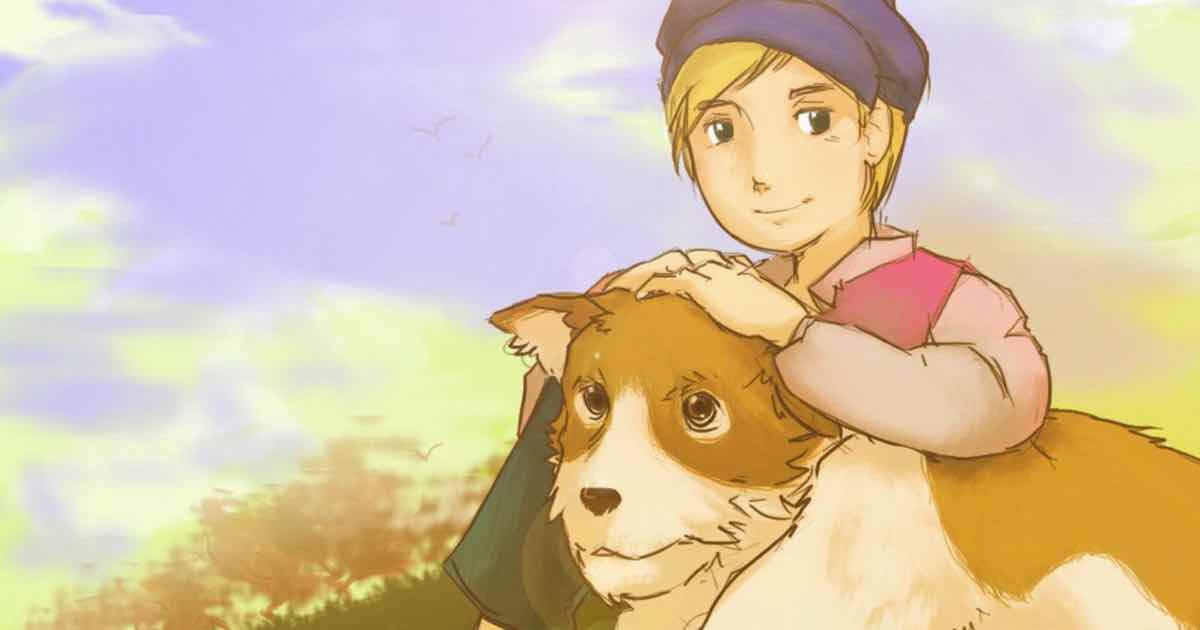
Yoshio Kuroda’s Dog of Flanders tells the devastating tale of a little boy named Nello and his dog Patrasche. The popular 90s anime is based on the 1872 children’s classic written by the British-French author known by the pseudonym Ouida. Although the tale is set in a 19th-century village in Antwerp, Belgium, it gained remarkable popularity in Japan as early as the early 20th century. A Japanese animated series on Nello and Patrasche was first produced in 1975.
The 1997 version stays faithful to the book. Despite its simple animation style, Kuroda delivers the story in a compelling way. Like Ghibli films, it handles emotion with subtlety, unlike the average Disney animation. The film’s most affecting moments lie in the tender bond between Nello and Patrasche. The sweetness and innocence of these moments make the inevitably sad ending all the more devastating.
WATCH: 20 Heartbreaking Anime Movies
19. I Want To Eat Your Pancreas (2018)

Cinema’s saddest stories often center on terminally ill teenagers, a trope so overused it now risks feeling exploitative. Yet Shinichiro Ushijima’s I Want to Eat Your Pancreas—despite its predictability—handles themes of friendship, grief, and death with surprising sensitivity. Based on Yoru Sumino’s 2015 novel, later adapted into a two-part manga, the film tells the story of an introverted high school boy who discovers the secret diary of his popular classmate, Sakura.
He learns that the ever-cheerful Sakura is living with terminal pancreatic cancer, a fact she hides from everyone else. As expected, a bond slowly develops between them. Ushijima’s direction can be heavy-handed, but the film nevertheless delivers an affecting portrait of fleeting youth and inevitable loss.
18. Giovanni’s Island (2014)
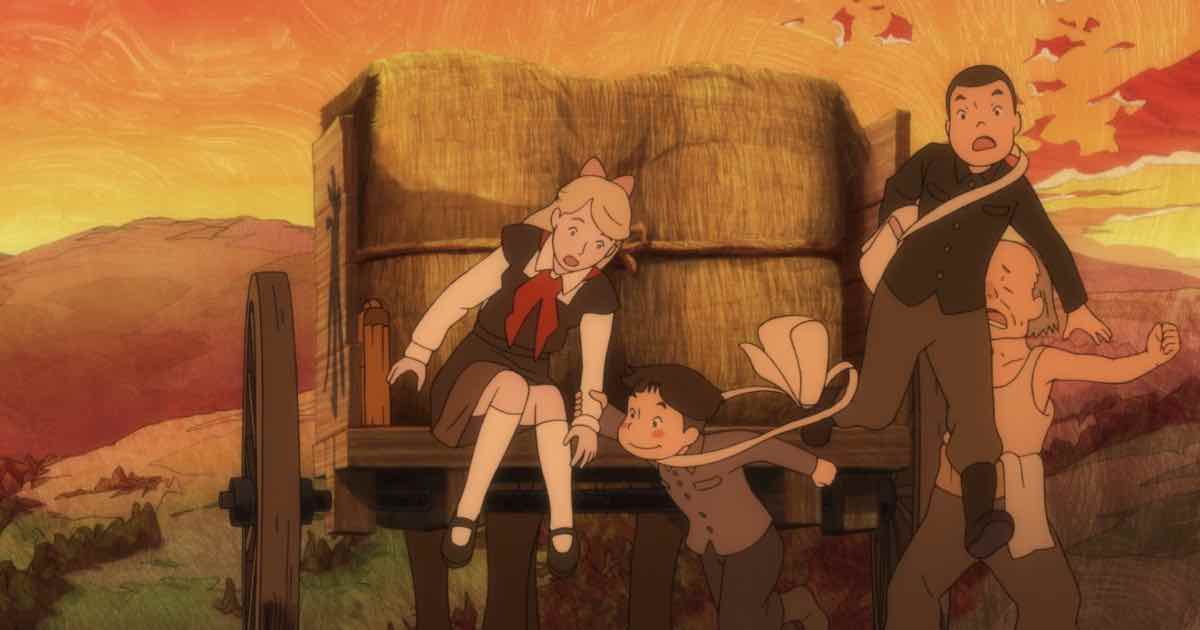
Like Barefoot Gen and Grave of the Fireflies, Mizuho Nishibuko’s Giovanni’s Island is a postwar survival tale about children caught in conflicts they barely understand. Set during the Russian occupation of Shikotan in northern Japan, it follows two spirited brothers, Junpei and Kanta, as they try to hold onto childhood amid despair.
They befriend Tanya, a Russian neighbor, but the adult world soon intrudes. The animation mirrors the narrative’s emotional arc. It begins with vibrant colors before shifting into stark grays and whites as the story darkens. Bleak though it may be, Giovanni’s Island is anchored by characters who cling to hope.
17. The Anthem of the Heart (2015)
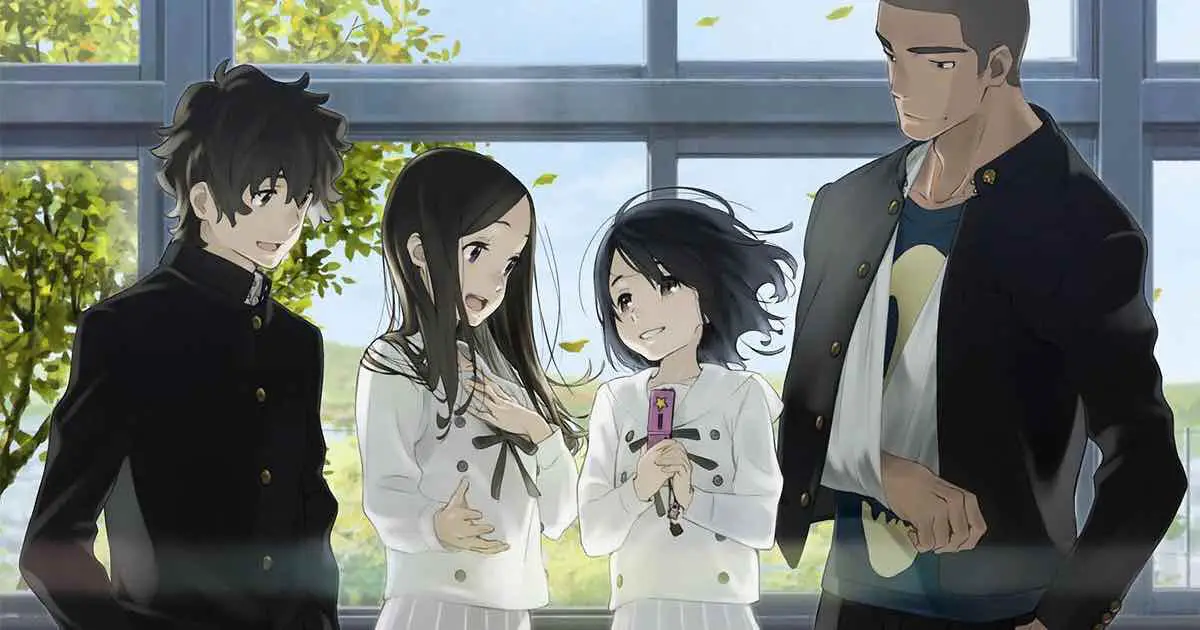
Tatsuyuki Nagai’s Anthem of the Heart uses a traditional ‘hand-drawn’ animation style reminiscent of Hayao Miyazaki. The story follows Jun Naruse, a young girl who innocently reveals her father’s affair. Her parents split, and her father blames her. Overcome with guilt, Jun makes a pact with an egg-shaped prince to never speak again.
Years later in high school, Jun keeps to herself until she bonds with a classmate. Through this friendship, she begins to find new ways to express herself. The ending may not fully satisfy, but Anthem of the Heart is a poignant coming-of-age tale about silence, trauma, and the struggle to be heard.
16. To the Forest of Firefly Nights (2011)

Takahiro Omori‘s debut feature, adapted from a manga by Yuki Midorikawa, is a standalone story of an unlikely friendship between a young girl and a ghostly spirit. Six-year old Hotaru gets lost in the mystical forest near her uncle’s house. She meets a masked spirit named Gen which helps her get back home. Though Gin is a beautiful human-like entity, the spirit can’t touch the humans. Over many summers, Hotaru returns to the forest to meet Gin.
Omiro’s poetic and elegiac 45-minute anime examines the burden of long-distance friendships. Intense, real emotions unfold in fantastically drawn backgrounds. The tear-jerking sad ending leaves a lasting impact.
15. Angel’s Egg (1985)

Long before the mind-bending dystopian drama Ghost in the Shell, Mamoru Oshii made a meditative anime with a wafer-thin plot and little dialogue. He worked with visual artist Yoshitaka Amano to create the post-apocalyptic world of Angel’s Egg. The anime tells the cryptic and metaphorical tale of a young girl and the egg she protects from the cyborgs-infested world. She comes across a soldier who also shows some interest in the egg.
A lot of what unfolds in the narrative is left to the viewers’ interpretation. Nevertheless, the decaying gothic city and the lonely girl overwhelm us with feelings of sadness. The film’s melancholic score and haunting sound effects add to the predominantly desolate mood. Overall, Angel’s Egg is an introspective arthouse animation with questions about the human condition.
14. The Girl Who Leapt Through Time (2006)
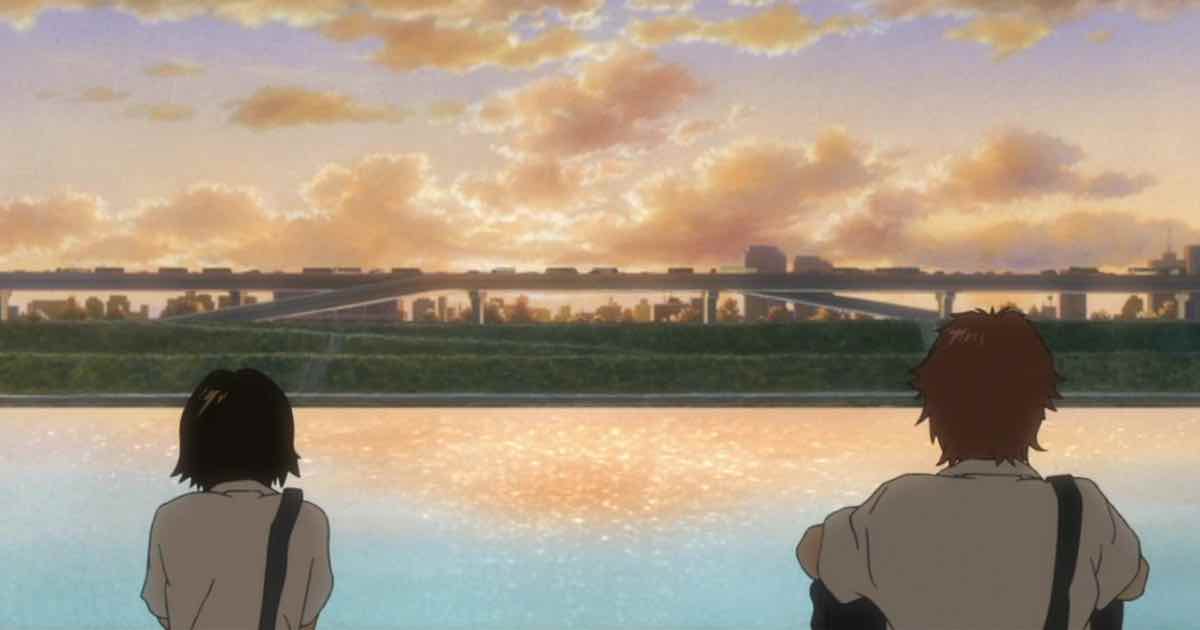
Mamoru Hosoda’s penchant for fantasy elements to deal with complex emotions is evident in his earlier critically acclaimed work The Girl Who Leapt Through Time. It’s based on the 1967 novel of the same name by Yasutaka Tsutsui. The tale looks at the responsibilities of power and the repercussions if it’s misused. The power in this tale is limited time-travel and a high-school girl named Makoto holds that power.
Makoto’s initial selfish time-leaps look like harmless fun. But her attempts to micro-manage her own and her friend’s life through time-leaps has unforeseen ramifications and also leads to tragedy. Though the resolution is a bit unsatisfying, Hosoda gets the characterization of a self-absorbed teenage girl right. He is also very effective in extracting powerful emotions, particularly when Makoto makes an all-important decision to embrace the uncertainty of life.
13. 5 Centimeters Per Second (2007)
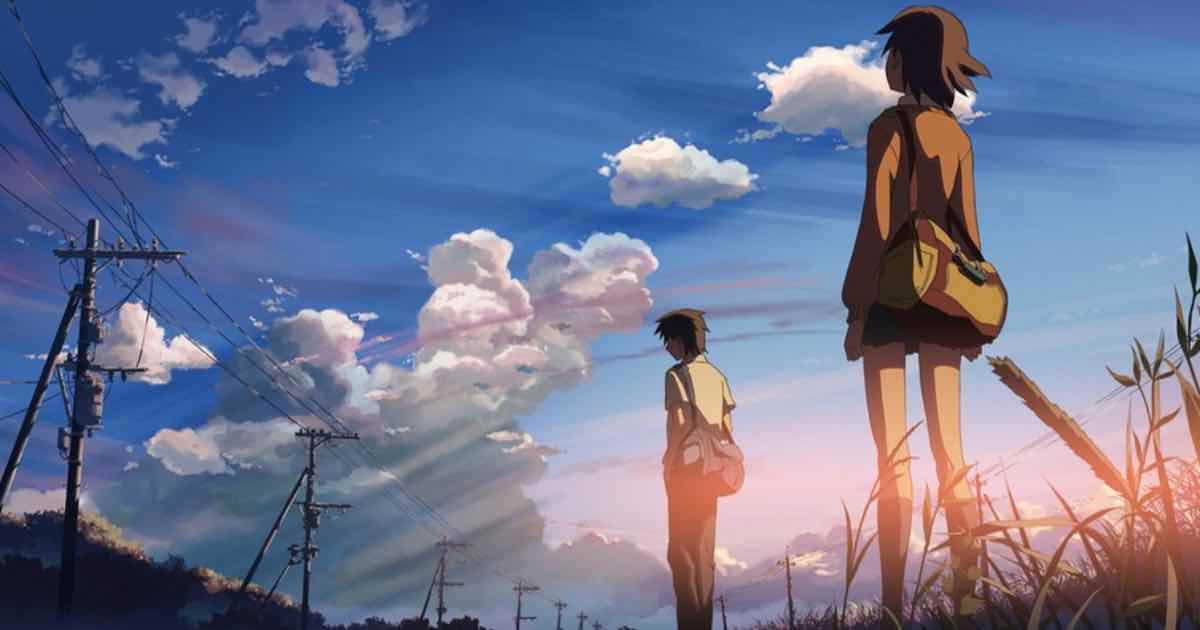
Makoto Shinkai presents a triptych of love and heartbreak stories in 5 Centimeters Per Second. The central characters are Takaki Tono and his friend Akari. Each of the three vignettes examines their relationship from different perspectives and different phases. Shinkai is exceptionally skilled at creating stunning backgrounds and an immersive atmosphere. The lush visuals gracefully flow alongside the soothing soundtrack.
At the same time, Shinkai adds more layers to the tale of youthful love. Though there’s always something reassuring in the way he ends his narrative, Shinkai also addresses the characters’ darker realities. He breaks a lot of our preconceptions about teen romance. Shinkai delves deep into these people’s bitter core. There are quite a few powerful moments here that could hit you like a ton of bricks.
12. The Garden of Words (2013)
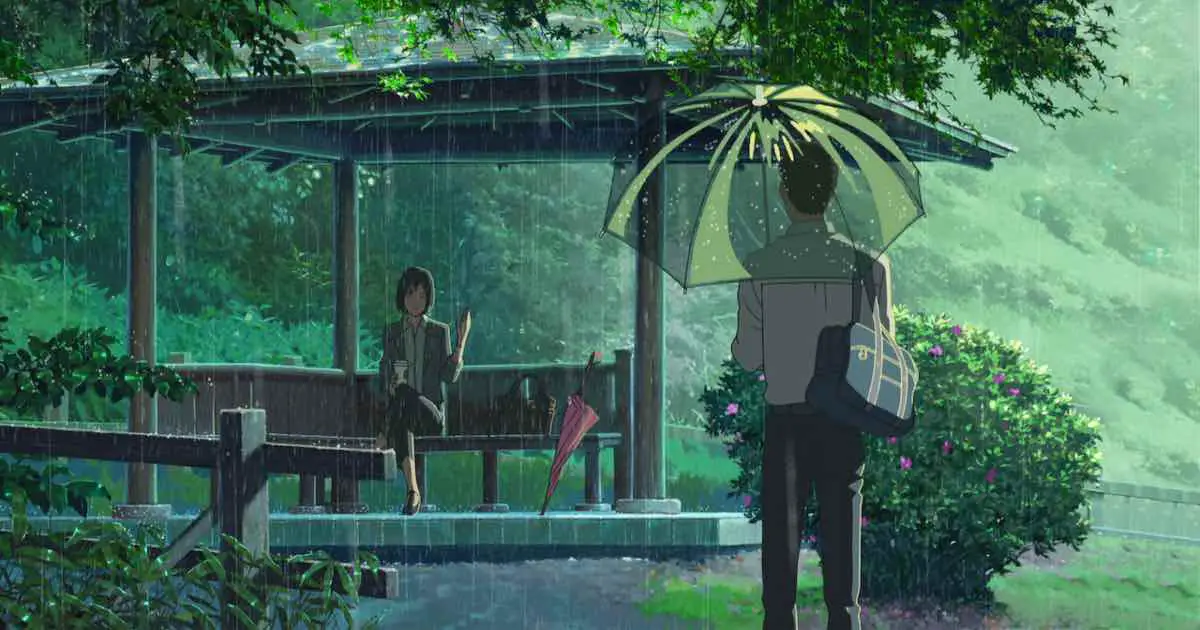
Loneliness and yearning are part of Makoto Shinkai’s supreme anime. But those are the predominant elements in this quiet and simple 46-minute anime. The Garden of Words is set on a rainy day which evokes complex emotions in two young individuals. One is a high-school student named Takao and the other, 27-year old Yukino Yukari. They both seek refuge from the spring shower in a local park. The two strike up a conversation that’s as awkward as any conversation between two self-aware strangers.
Naturally, the young boy falls for the mysterious Yukino, and everytime it rains they meet in the lush garden. Despite the weirdness of their relationship, Shinkai’s tasteful handling of it gives room to deeply explore the character’s inner feelings. The ending is predictably bittersweet as we know what fate has in store for these two sensitive individuals.
11. Weathering With You (2019)
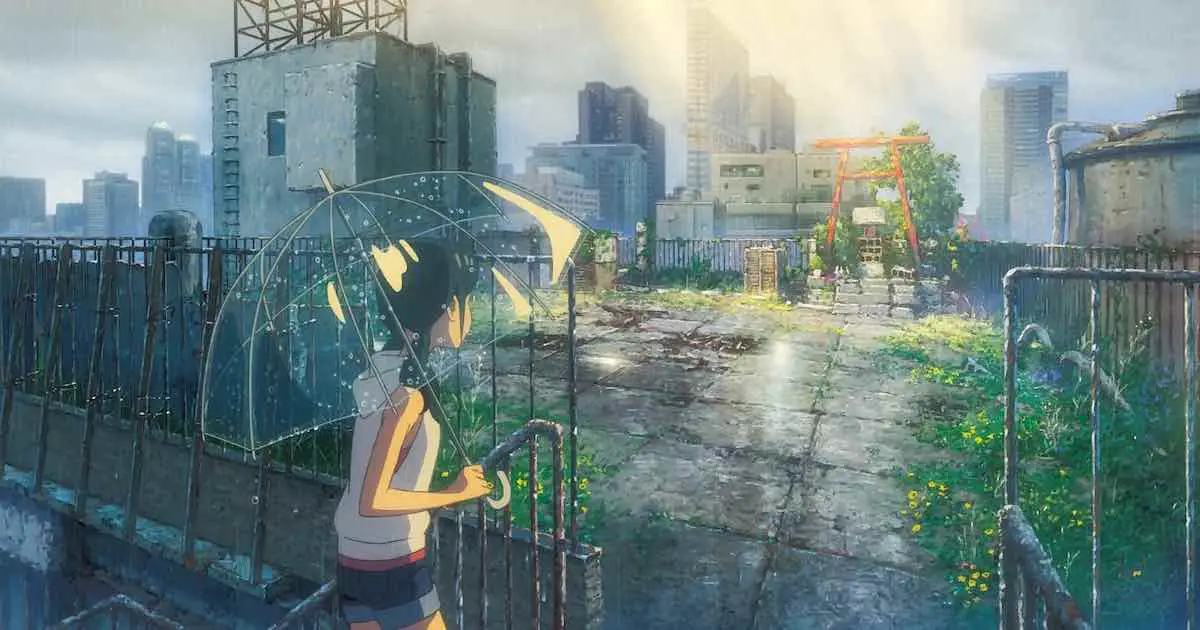
Makoto Shinkai’s follow-up to his huge blockbuster hit Your Name (2016) isn’t as affecting as the predecessor. Yet Weathering With You has its own share of interesting and complex themes. As usual Shinkai stuns us with his staggeringly beautiful imagery. The animated locations were largely based on real places in Tokyo, and the attention to detail is absolutely breathtaking. The narrative revolves around a runaway high-school student named Hodaka. He works for an Occult magazine and decides to find out about the rumored ‘Sunshine Girl’. The shy and strong-willed Hina is the girl in question, and Hodaka discovers that she can change the weather at her will.
While it’s a romantic fantasy, Shinkai once again focuses on the ephemerality of life, with each character experiencing the unavoidable passage of time and suffering. At the same time, both Hokada and Hina never stop embracing the beauty within their surroundings.
10. A Silent Voice (2016)
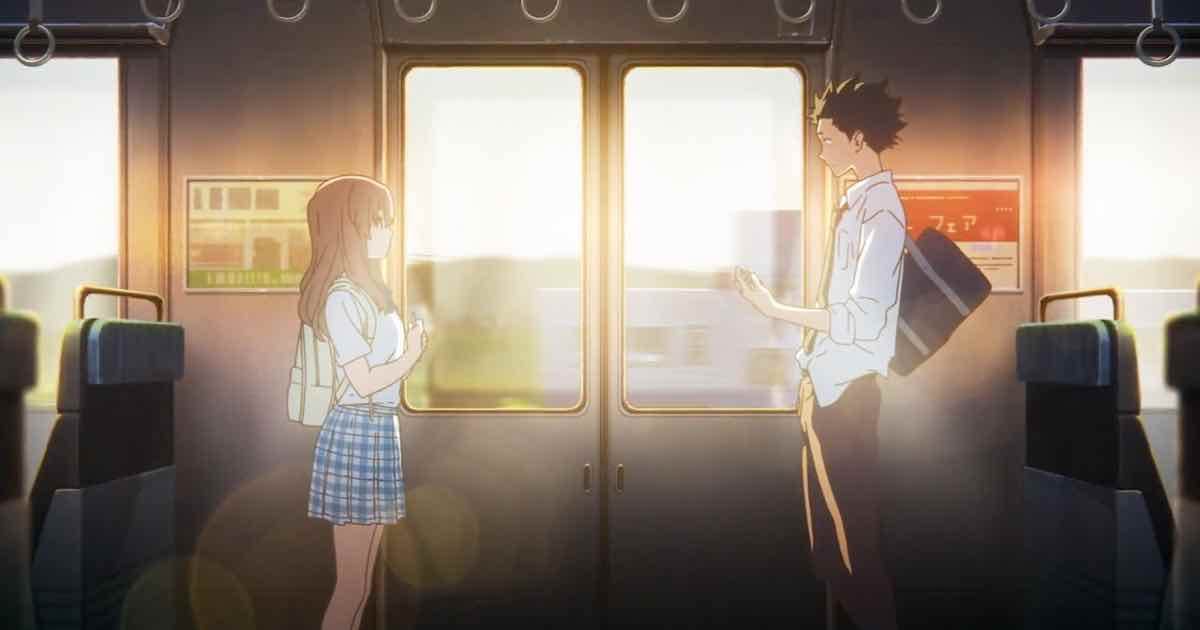
Naoko Yamada’s A Silent Voice is based on the successful manga series by Yoshitoki Oima. It features a deceptively simple story line but conveys complex emotions, touching on sensitive topics like bullying and social anxiety. It tells the tale of 17-year old Shoya who is a social outcast and decides to commit suicide. At the same time, Shoya’s days as a bully in the elementary school heavily weigh upon him. Six years before, he mercilessly bullied a deaf girl named Shoko Nishimiya. It tipped to a point where Shoko was forced to transfer school.
Shoya decides to apologize to the girl for his terrible acts. This leads to an unconventional friendship between two damaged souls. The anime is about deep feelings, and intimately explores teenage depression and anxiety.
9. When Marnie Was There (2014)
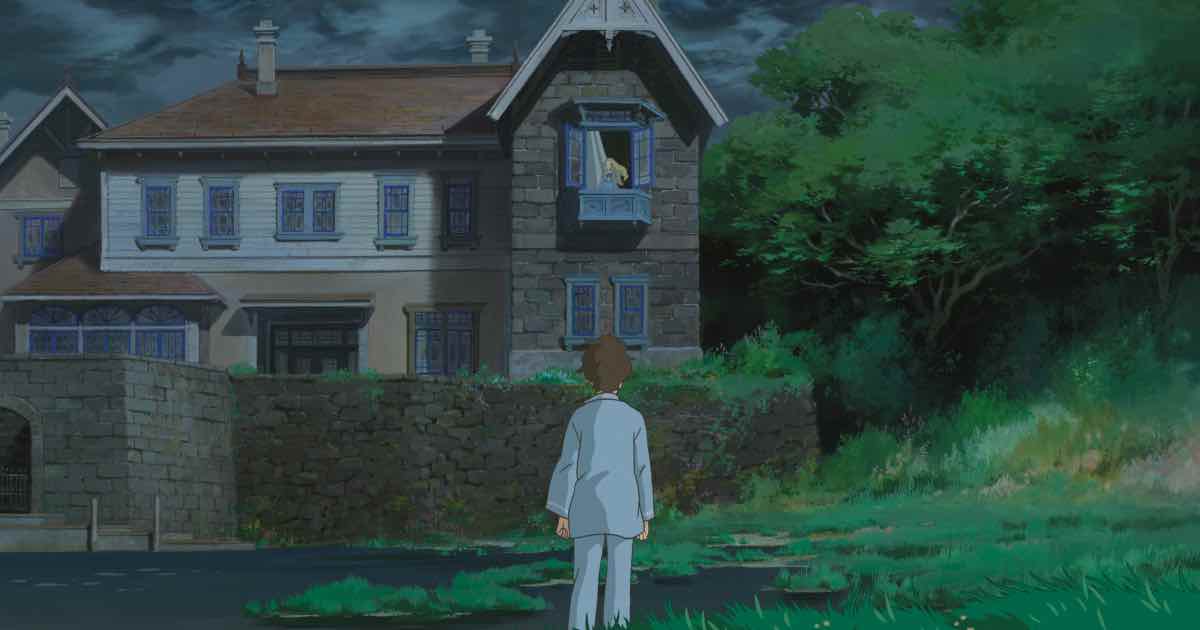
There’s an unbearable melancholia that runs throughout Hiromasa Yonebayashi’s magnificently animated film When Marnie Was There. It’s based on Joan G. Robinson’s 1967 novel of the same name. The story revolves around 12-year old Anna. She is orphaned and suffers from stress-induced asthma attacks. Worrying about Anna’s health and the girl’s inability to connect with people, her guardian sends Anna to the countryside. There Anna is drawn towards a big and old empty mansion. She also befriends a mysterious blond-haired and blue-eyed girl named Marnie.
The anime is largely about trauma, grief and loneliness. Its perfect note of melancholy is further strengthened by the subtly eerie imagery. There are also quite a few breathtaking shots that speak of the supreme talent of Studio Ghibli animators. The central mystery about Marnie will eventually leave you in tears.
8. The Wind Rises (2013)

Hayao Miyazaki’s penchant for aviation becomes a focal point once again in his 11th feature-film. But this time the aviation element is more grounded in reality. The Wind Rises is loosely based on the life of Horikoshi, the renowned Japanese engineer who designed the World War II fighter planes. The narrative has also autobiographical threads since Miyazaki’s father founded an aircraft company that manufactured parts for the fighter planes. Moreover, like the narrative’s ingénue, Miyazaki’s mother suffered from tuberculosis.
On the outset, The Wind Rises comes across as the saddest Miyazaki film. It’s about a man who dreams about a beautiful thing like airplanes. However, he is haunted by his creation which brings violence and destruction to people. Apart from the protagonist Jiro’s struggles and losses, in one key sequence Miyazaki brilliantly sketches the devastating 1923 Great Kanto Earthquake. The film was released with the heartbreaking news that it is Miyazaki’s last film. However, last year Miyazaki confirmed that he is making one more film.
7. Wolf Children (2012)

Werewolves are often associated with the horror genre. In Mamoru Hosoda’s gentle tale about single parenthood, a young girl named Hana falls in love with an affable werewolf. His wild side pushes him to hunt pheasants in the night. But he enjoys a calm domestic life with Hana. One night, Hana’s werewolf husband doesn’t return from his hunting trip. The rest of the narrative deals with Hana’s determination to raise their two werewolf children.
Hosoda himself wrote the original story and he uses the fantasy element of werewolf to address the issues of racism and prejudice directed against female single parents. Hosada is often compared with Miyazaki. In fact, Hosoda’s keenly observant storytelling methods and wondrous sketches of rural landscapes bring him closer to the anime master. He tells a complex family story without shying away from feelings of fear, sadness, and uncertainty.
6. Barefoot Gen (1983)

Barefoot Gen is based on Keiji Nakazawa’s 1972 manga series of the same name. It was loosely based on Nakazawa’s own experience of witnessing Hiroshima A-bomb attack at the age of 7. Mori Masaki’s powerful adaptation portrays the inhumanity of the bombing from the perspective of its innocent victims. The narrative mostly tells the tale of a young boy named Gen who lives with his father, pregnant mother, older sister, and younger brother. The unspeakable horrors of the A-bomb and its aftermath are rendered with harrowing details.
Barefoot Gen emotionally wrecks you, particularly when the ever-chirpy Gen succumbs to despair. The anime also directs its pointed critique towards Japanese society. It addresses the wide-spread discrimination against the atom bomb survivors, who are known as ‘hibakusha’. Overall, Barefoot Gen is a gripping and important tale about the grim realities of war.
5. Perfect Blue (1997)
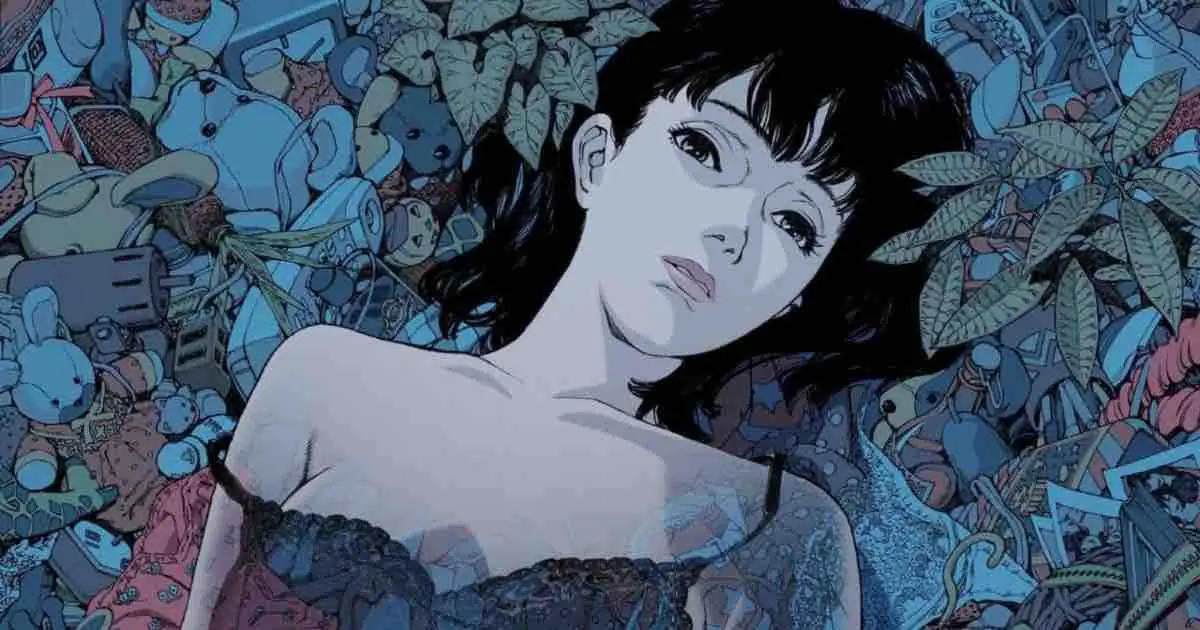
Satoshi Kon is known for his complex narrative techniques that push the boundaries of animation filmmaking. He’s also renowned for his critical commentary on Japanese pop culture. His short yet enriching body of work – before his death at the age of 46 – at once demands appreciation and contemplation. Perfect Blue was Kon’s debut feature which explores toxic fan culture. It revolves around a young pop star who decides to leave her music career for acting. While the pop star herself goes through an identity crisis, she’s also being stalked by a sinister and obsessed fan.
Apart from dealing with themes of fandom and celebrity culture, Kon most importantly addresses the themes of depression and sadness, as the color in the title indicates. He employs non-linear narrative and innovative animation to make us feel the protagonist’s melancholia and sense of alienation.
4. Your Name (2016)

Your Name was the biggest anime box office hit of all time. It surpassed Miyazaki’s classic Spirited Away (2001) to gain that position. Its director Makoto Shinkai is known for crafting bittersweet dramas that usually revolve around long-distance relationships. Your Name tells the tale of two teenagers, Taki and Mitsuha, who one day inexplicably wake up in each other’s bodies. The first-half of the anime uses the gender switch element for laughs.
Gradually, Shinkai takes us to unexpected tragic places, features a brilliant flashback, and furthermore explores the social constructions of masculinity and femininity. Your Name eventually makes a profound statement on relationships and its essential building block – memories. Despite few narrative flaws, the emotional pull of the anime is such that the open ending leaves us with feelings of hope as well as pensive sadness.
3. In This Corner of the World (2016)

Sunao Katabuchi’s ode to the resilience of humanity is based on Fumiya Kono’s manga series. Set during World War II, In this Corner of the World is a portrait of a young woman named Suzu, who moves to a port city after marriage at the height of the war. Suzu is not good with the domestic chores. But she exhibits a great talent for drawing and weaves highly imaginative tales out of her stark reality.
The anime is an intimately detailed study of human fragility in the face of war, poverty, and fear. It’s a tale of a woman caught in the relentless daily grind with no visible signs of recovery. Similar to Takahata’s Grave of the Fireflies, Katabuchi’s anime is profoundly tragic but is devoid of melodrama.
I’d recommend the 168-minute extended cut over the theatrical version.
2. Whisper of the Heart (1995)

It’s hard to watch Whisper of the Heart and not cry. Takahata’s Grave of the Fireflies is set in a grim war-time environment that we naturally feel for its innocent victims. However, in Whisper of the Heart the tears are for how intimately Yoshifumi Kondō captures the alternating tides of happiness and sorrow in life. Every frame of this magnificently sculpted anime left me in tears, also because this was Mr. Kondō’s last film before he died. His mentor in Studio Ghibli, Hayao Miyazaki, wrote the script for the movie which is based on a manga by Aoi Hiiragi.
The tale revolves around young and inquisitive Shizuku Tsukishima. She is intrigued by fellow book-lover Seiji Amasawa, who borrows from the library every book she likes. But what follows is not a simple love story. There’s a lot of twists, humor, mystery. But more importantly this grounded tale of first love withholds plenty of real emotions.
1. Grave of the Fireflies (1988)
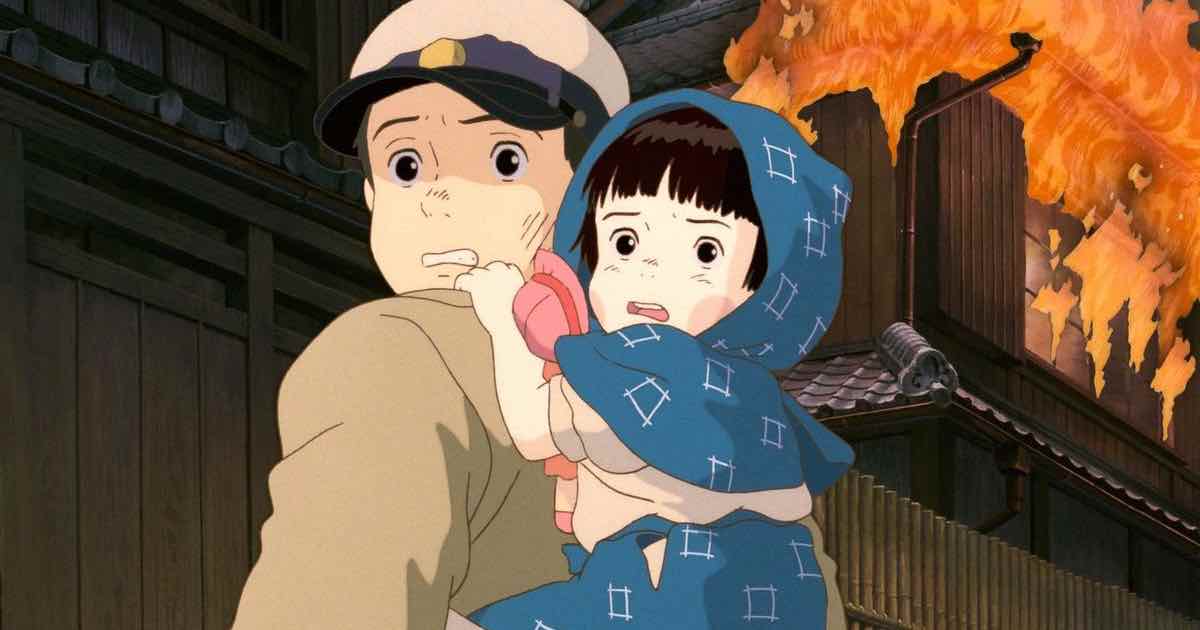
While Barefoot Gen made a very blunt statement about nuclear war, Isao Takahata’s 1988 masterpiece is remarkably restrained and takes a poetic approach to deliver its anti-war message. Grave of the Fireflies is based on a 1967 semi-autobiographical short story by Akiyuki Nosaka. It tells the tale of young Seita and his little sister Setsuko who barely escape the Allied forces’ firebombing in their town. The narrative chronicles their efforts to survive on their own, while the nation is rapidly disintegrating towards the end of the war.
Grave of the Fireflies deals with more complex emotions than Barefoot Gen though both the tales feature children as the central characters. The animation is less harrowing yet incredibly hard-hitting. It’s a story about unconditional love and also of deep sadness. In fact, it’s not only the saddest anime movie of all time, but one of the saddest movies you might ever come across.
Wrapping Up
From aching dramas about young love to tackling heart-breaking issues like war, famine and illness, anime creators find plenty of avenues to make us cry. I have only listed feature-films, but there are lots of tear-jerking anime series that are largely based upon popular manga. Violet Evergarden, Plastic Memories, Anohana: The Flower We Saw That Day, Your Lie in April, Steins Gate, Clannad, and Erased are all fundamentally sad anime series. Whenever you need a good cry you can binge-watch those. Of course, there are still countless other sad anime I might have overlooked. What did we miss? What are your favorites?

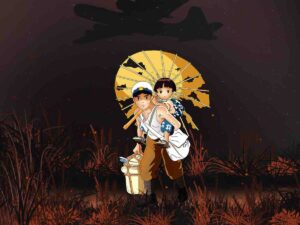
Fantastic piece! I had been looking for some anime reccos. Thanks for this.